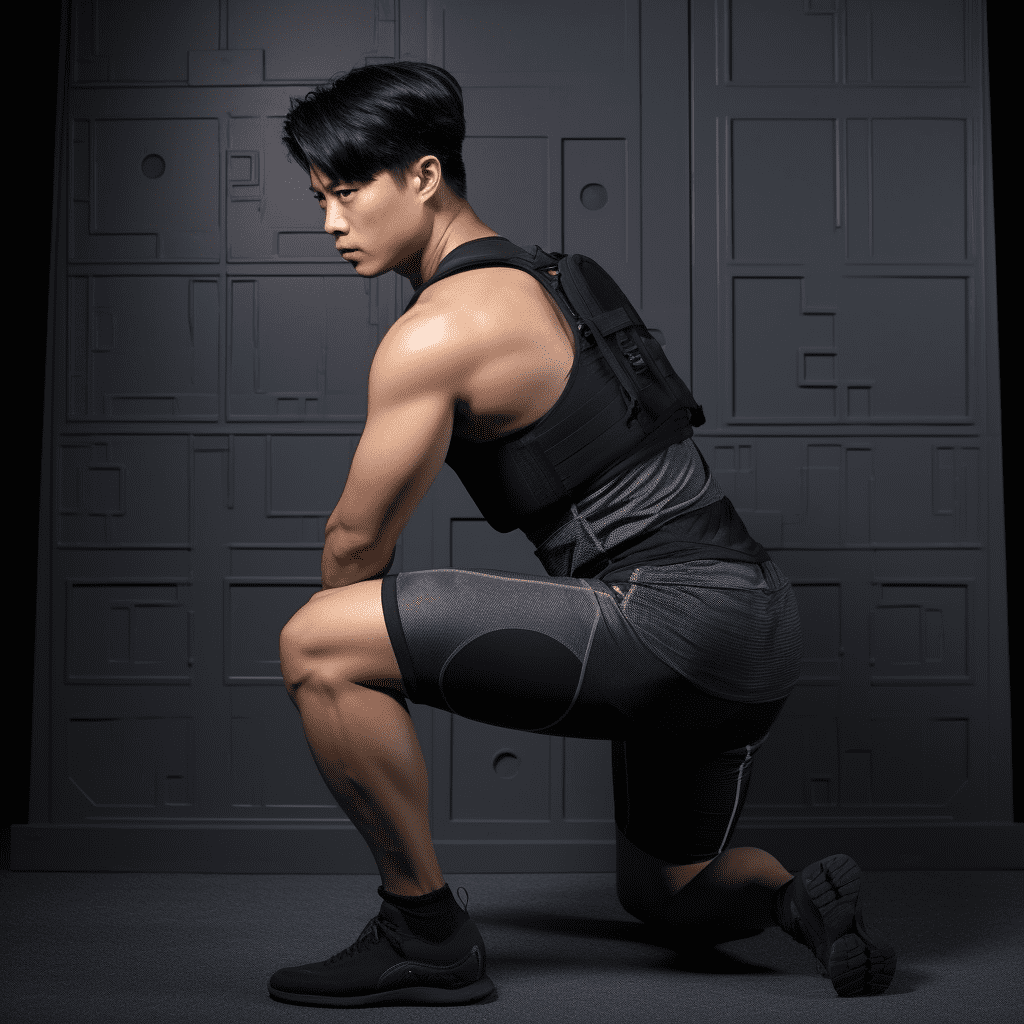
How to Do Asian Squat: A Guide to Mastering the Deep Squat Position
Image
Asians have been known for their ability to comfortably sit in a deep squat position for long periods of time. This posture, also known as the Asian squat, has numerous benefits for the body, including improved flexibility, mobility, and strength. Whether you want to incorporate the Asian squat into your daily routine or simply want to expand your range of motion, this guide will provide step-by-step instructions on how to do the Asian squat correctly.
What is the Asian Squat?
The Asian squat is a resting position commonly used in Asian countries for various activities such as eating, socializing, or taking a break. It involves balancing on the balls of your feet with your heels on the ground while lowering your body into a deep squat. Unlike the traditional squat, where the emphasis is on the movement of the hips, the Asian squat focuses on the ankle and knee flexibility, allowing for a deep range of motion.
How to Do the Asian Squat: Step-by-Step Instructions
- Start by standing with your feet slightly wider than shoulder-width apart.
- Slowly lower your body down, keeping your back straight and your chest up.
- As you lower yourself, shift your weight onto the balls of your feet while keeping your heels on the ground.
- Continue lowering until your thighs are parallel to the ground or as close as you can comfortably go.
- If possible, place your elbows on the inside of your knees and gently push them apart to deepen the stretch.
- Hold the squat position for 30 seconds to a minute, gradually increasing the duration as you become more comfortable.
Tips for a Successful Asian Squat
- Start with a wider stance: If you are new to the Asian squat or struggle with flexibility, begin with a wider stance. This will provide a more stable base and make it easier to maintain balance.
- Practice ankle mobility exercises: Having good ankle mobility is essential for achieving a deep squat. Incorporate exercises such as calf stretches, ankle circles, and heel raises into your routine to improve ankle flexibility.
- Use proper breathing techniques: When performing the Asian squat, focus on deep breathing. Inhale through your nose as you lower yourself into the squat and exhale through your mouth as you rise back up.
- Gradually increase duration: Start with shorter durations and gradually increase the time you spend in the squat position. This will allow your muscles to adapt and improve flexibility over time.
Common Mistakes to Avoid
- Rounded back: Maintaining a straight back is crucial for proper form and to avoid strain on your lower back. Keep your chest up and shoulders back throughout the squat.
- Strained knees: Avoid letting your knees collapse inward or go past your toes. Keep them in line with your toes to prevent unnecessary strain.
- Tipping forward: Maintain proper balance by engaging your core muscles and keeping your weight centered. Avoid leaning too far forward or backward.
- Rushing the movement: Take your time and focus on form rather than speed. Rushing the squat can increase the risk of injury and prevent you from fully benefiting from the exercise.
FAQ
1. How long does it take to master the Asian squat?
Mastering the Asian squat is dependent on various factors, including your current flexibility, mobility, and consistency in practice. With regular practice and gradual progression, it can take a few weeks to a few months to achieve a comfortable and deep squat.
2. Can anyone do the Asian squat?
Yes, anyone can do the Asian squat with practice and patience. It may feel challenging at first, especially if you have limited flexibility, but consistent effort and proper form can help you improve over time.
3. Are there any alternative exercises to improve ankle and knee flexibility for the Asian squat?
Yes, there are alternative exercises that can help improve ankle and knee flexibility for the Asian squat. Some examples include ankle mobility exercises, calf stretches, hamstring stretches, and deep squats with support like a wall or chair.
4. Are there any specific conditions that may limit someone from doing the Asian squat?
Individuals with pre-existing knee or ankle injuries, or those with severe joint pain, should consult with a healthcare professional before attempting the Asian squat. It’s important to prioritize safety and listen to your body’s limitations.
5. Can the Asian squat be used as a form of exercise?
While the Asian squat primarily focuses on improving flexibility and mobility, it can also be used as a form of exercise. Holding the squat position for longer durations or incorporating pulses can provide a challenging lower body workout.
Conclusion
Incorporating the Asian squat into your routine can bring about significant benefits for your body. By following the step-by-step instructions provided in this guide and being consistent with practice, you can gradually improve your flexibility, mobility, and strength. Remember to listen to your body, take it at your own pace, and enjoy the process of mastering this ancient resting position.


